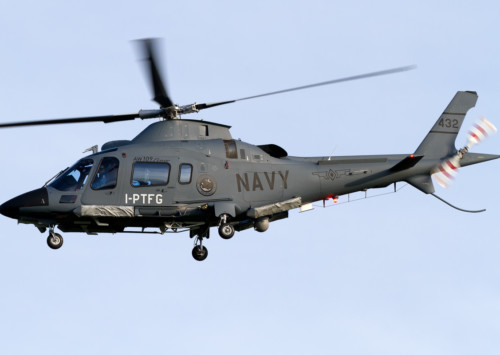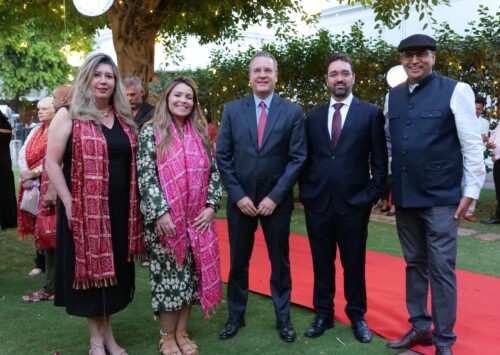A toothless tiger shark or a marvel of Make in India

Kalvari, the first of six Scorpene-class submarines, is designed by a French naval defence and energy company
Surviving several stings from several stakeholders, the INS Kalvari submarine has finally been commissioned on December 14. Yet, many challenges remain.
Dedicating the Scorpene-class INS Kalvari submarine to the nation, Indian Prime Minister Narendra Modi had observed how, “This is the perfect example of ‘Make in India’.”
Kalvari, the first of six Scorpene-class submarines, is designed by French naval defence and energy company Naval Group (previously called DCNS), and is being built by Mazagon Docks Limited (MDL) in Mumbai as part of Project-75 of the Indian Navy.
The construction of INS Kalvari began in 2006. Five submarines of the same class are being built by MDL. The second Scorpene-class submarine is undergoing sea trials. It will be commissioned in March 2018. Indian Navy operates 14 conventional submarines and two nuclear-powered ones after the induction of INS Kalvari.
A deep-sea tiger shark
‘Kalvari‘ is a Malayalam word that means deep-sea tiger shark. Will the submarine reflect agility, strength and predatory prowess and live up to this sobriquet?
It’s after a gap of 17 years that a submarine built indigenously has been commissioned in the Indian Navy. It would be the 16th submarine as part of India’s fleet, a figure that has long been in dire need of an upgrade — China has 68 submarines, while the United States of America (US) has 70. North Korea is the world leader in this department with 78 submarines!
Powered by a diesel-electric engine and capable of indulging in all types of naval warfare, the INS Kalvari appoints advanced acoustic silencing technique, which dampens the vibrations produced by the submarine, making it even more difficult to be detected by sonar. Even the equipment inside the pressure hull of the INS Kalvari is mounted on shock-absorbing cradles for enhanced stealth. Only a handful of countries have the technology to detect an INS Kalvari moving in their waters.
It has many other technical marvels to its credit that have been widely reported.
A tiger without a tooth?
But, what is missing from the tiger is its tooth. INS Kalvari has been commissioned without being adequately armed. It does not have any of the heavyweight torpedoes—the main weapon for a submarine.
This is not the first time that a significant weapon system has been commissioned without it being adequately armed. Way back in August 2014, the INS Kolkata, a destroyer, in Mumbai (west India) and the INS Kamorta, a submarine hunter-killer, in Visakhapatnam (south-east India) were commissioned. The INS Kolkata was commissioned without its Long Range Surface to Air Missiles (LR-SAMs) while the Kamorta, was commissioned without its Active Towed Array Sonar (ATAS). It means INS Kolkata was minus its primary land-attack weapon and the Kamorta was not – and still cannot – see adequately underwater.
Why does INS Kalvari not have torpedoes?
According to the defence observers the torpedoes from old submarines are being fitted.
But the AgustaWestland chopper scam impacted the purchase of torpedoes for the submarine.
Being one of the biggest importers of arms and ammunitions, India has had a share of its scams and scandals hitting multi-million acquisitions. The Scorpene deal too came under attack from various quarters.
India had cancelled its contract to buy 98 Black Shark heavyweight torpedoes, which would take down enemy ships and submarines, at an estimated cost of USD 200 million.
The manufacturers of the torpedo—Whitehead Alenia Systemi Subacquei (WASS)—is a subsidiary of Italian arms manufacturer Finmeccanica. The Italian arms manufacturing giant was blacklisted after it was alleged that another subsidiary of the company, AgustaWestland, had paid bribes to secure a contract to sell 12 medium lift helicopters to India.
Surviving Censures: Signed in 2005 it was a government-to-government deal between India and France. India opted for the French offer despite strong protests from the Germans who were offering the HDW 214 class with transfer of technology.
Then, the comptroller and auditor general of India in their report pointed out to sleazy wheeling and dealing, huge delays and financial irregularities and the cost of the deal escalated.
“Large concessions in respect of warranty, performance bank guarantee, escalation, arbitration, liquidated damages, agency commission were bestowed on the vendor,” it said.
India’s accounting watch dog pointed out cost escalation to the tune of INR 23.83 billion crore as the government took nine years to conclude the deal, dilution of requirements to favour French firms in the acquisition process, a price escalation clause of 11.06 pc and a clause banning commissions to agencies was not signed.
Looking for alternatives
The Navy has been asked to look for alternatives. The select foreign manufacturers will have to choose their Indian partners and the torpedoes will be manufactured using the Strategic-Partnership (SP) route.
The Modi-led NDA government is keen to reduce India’s dependence on foreign equipment manufacturers. It has opened up defence manufacturing to the Indian private sector. The SP route envisages that the Indian private companies will tieup with foreign manufacturers to get technology, and in return, the government will assure orders and allow exports as well.
Besides India’s Defence Research Development Organisation has begun work on developing a Kilo-class submarine version of the torpedo.
Four years later, by 2010, the Scorpene project was behind time. Originally scheduled to be inducted in 2012, the project got delayed by five years due to trouble in absorbing technology and production issues.
Data Leak: Also, the project came under cloud in 2016 after an Australian paper reported data leaks to the tune of 22,000 pages related to the six Scorpene-class submarines being made by the French company DCNS in India. An assessment by the Indian Navy dismissed the breach, asserting that 90 pc of the information was commercially available and the most critical data on weapon systems was not leaked.
No wonder India is producing warships, but are they battle ready?










